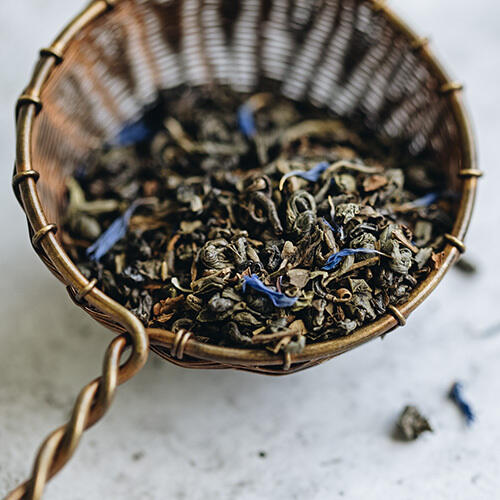Green tea: the ultimate guide
Curious about green tea’s humble beginnings and the knack to brewing the perfect cup? Here’s a guide to going green…

Did you know?
Legend has it that green tea originated in 2737BC when a few leaves fell into the mythical Emperor Shennong’s cup of hot water.
What Is Green Tea?
Again, we have the leaves of the mighty Camellia sinensis plant to thank for green tea – and China, where green tea originated and continues to be predominantly produced today. Some of the best green teas are also found in Japan, who’s developed its own style of production based on ancient Chinese techniques. Unlike black tea, green tea is heated before oxidation can take place, preserving its lush, refreshing taste.
How Is Green Tea Made?
Unlike black tea, green tea is heated before oxidation can take place – preserving its delicate, refreshing taste.

PICKING
The delicate bud and top two leaves are best for green tea.

WITHERING
The leaves are laid out on racks to dry for 1–3 hours.

HEATING
To prevent oxidation, the leaves are fired or steamed and "fixed".

ROLLING
Most green teas are rolled to release their aromatic oils.

DRYING
Finally, the leaves are dried, sorted and packed.
Where Chinese and Japanese green teas differ is usually down to the heating stage. Chinese green tea tends to be fired, either by hand in a hot wok or rolled around several times in a large vat, achieving a slightly nutty or smoky flavour like our Gunpowder Green. Typically, Japanese tea is passed through hot steam and shaped to create needle-like leaves, resulting in a peas-in-a-pod freshness similar to that of our Gyokuro.

Green Tea and Caffeine
Both green tea and oolong contain around 31mg of caffeine per 100ml, which is a little less than black tea and a little more than white and yellow tea. (It’s a good idea to bear in mind that this figure can vary depending on the specific batch of tea you drink, and the time, temperature and strength of your brew.)
How Do You Brew Green Tea?
Green tea is more delicate than black tea, and should never be brewed with boiling water: the heat extracts tannins, giving your tea a bitter, astringent flavour. Use water off the boil (around 80°C) – leave the kettle after boiling for five minutes, then pour and infuse for 2–3 minutes. Oh, and we’d suggest giving milk a miss to enjoy the verdant flavour profile in all its glory.
1 teaspoon
80 degrees
2–3 minutes
And then there’s the green tea power powder – but that’s a whole different story, so head over to our matcha page for more information.








